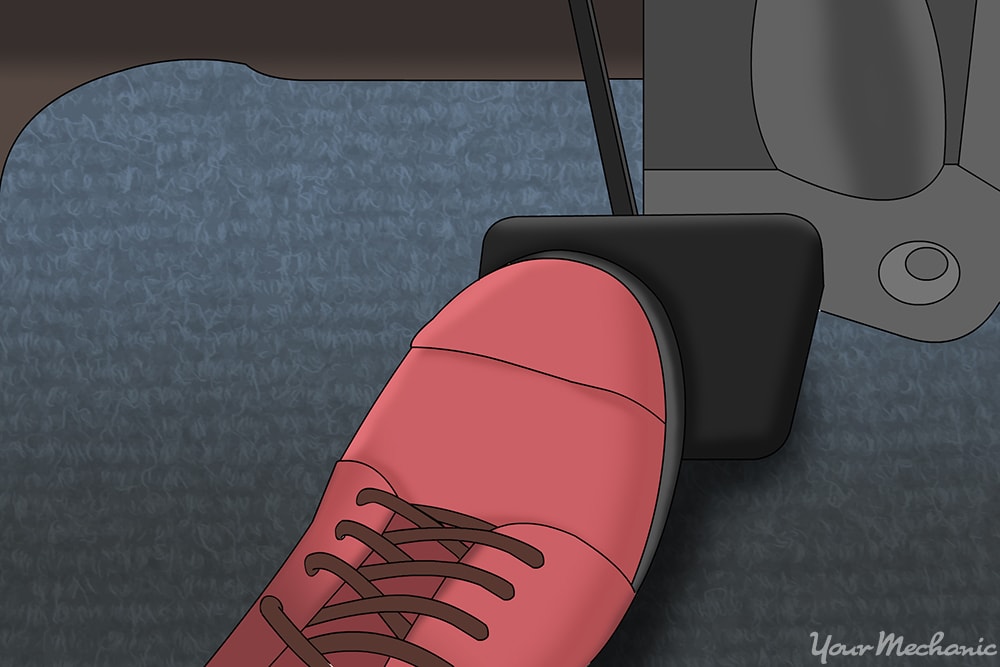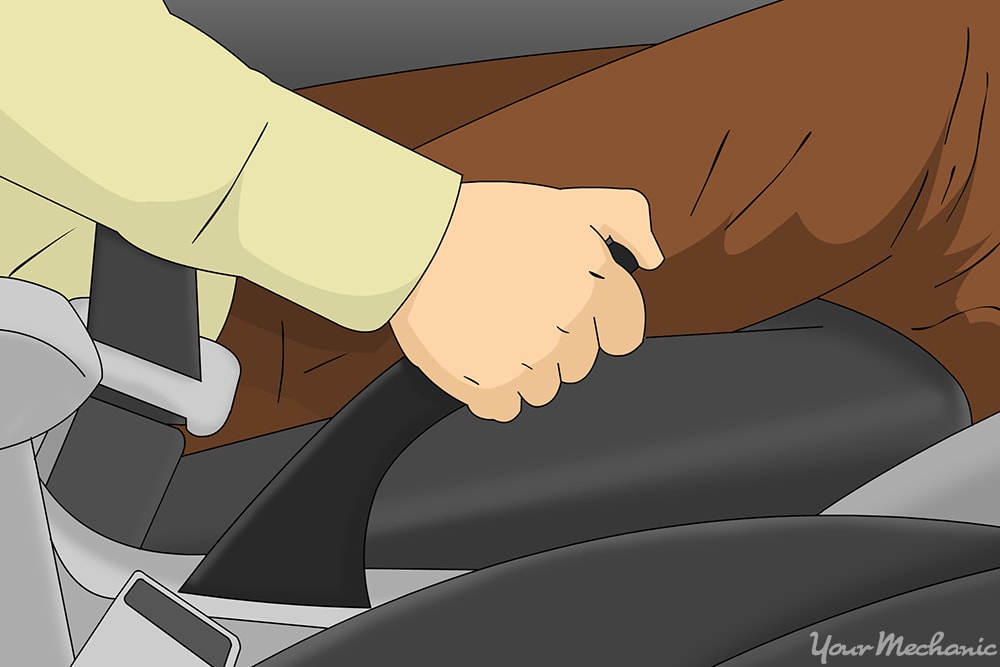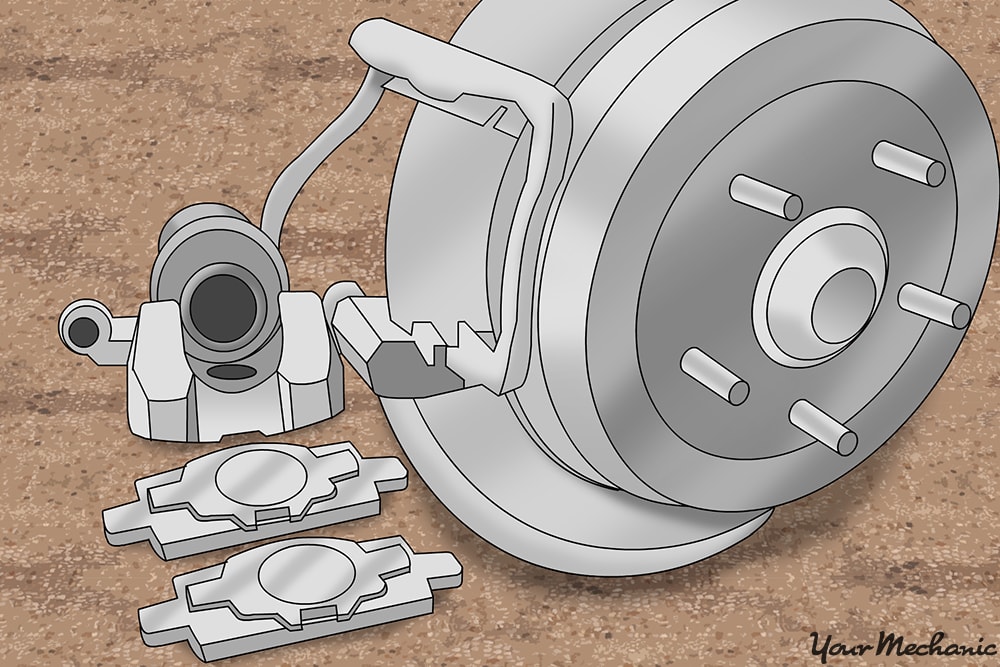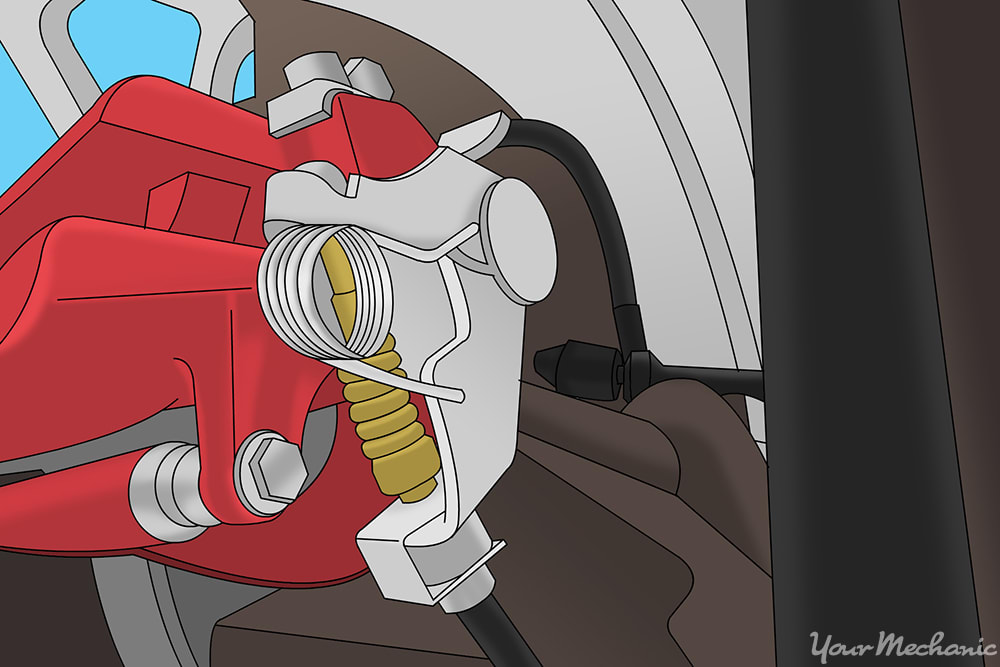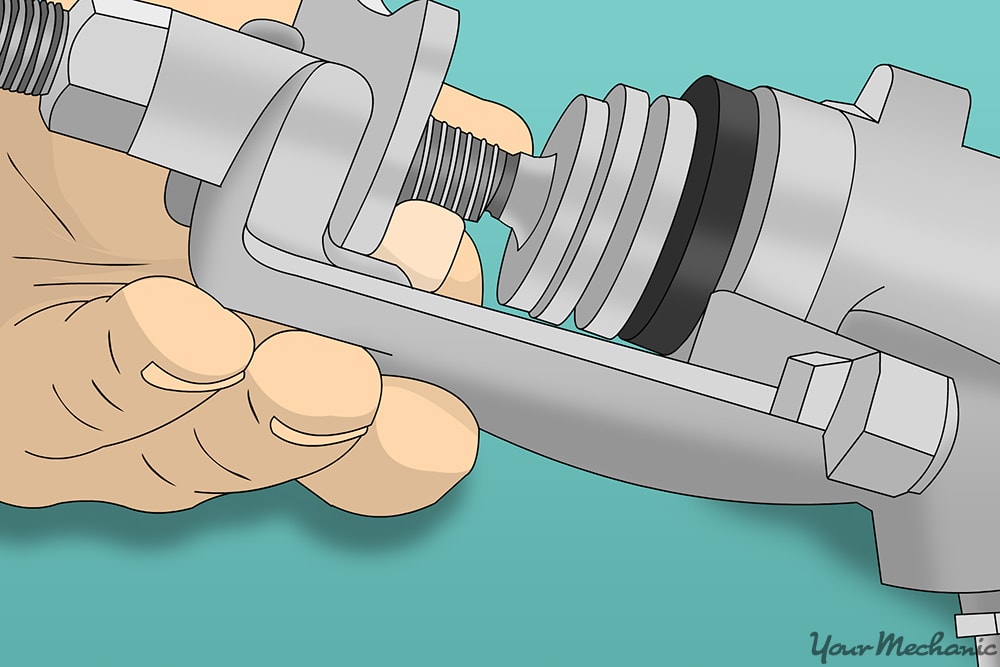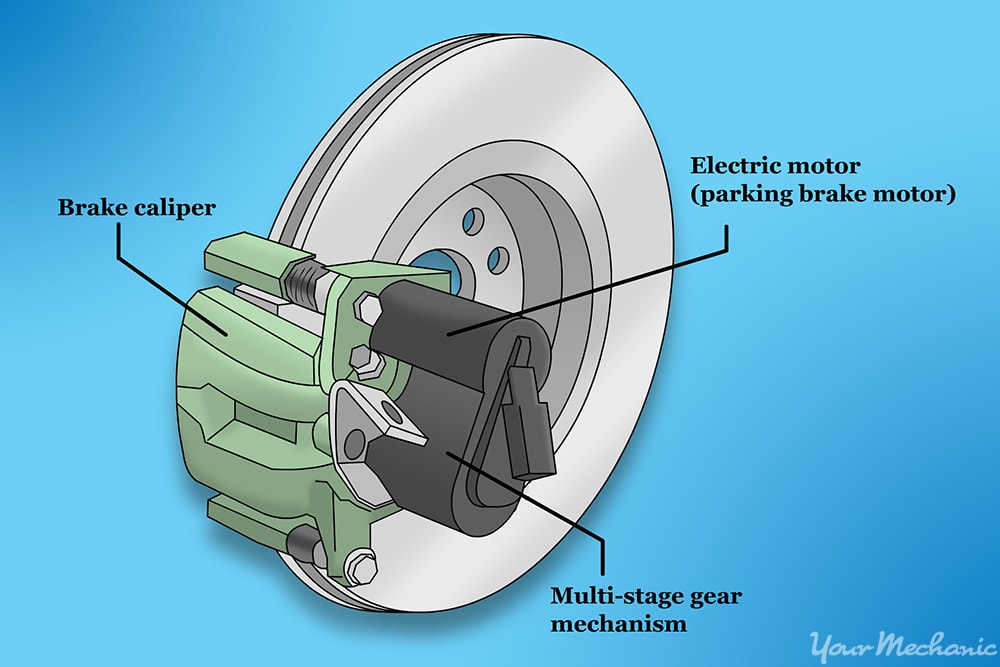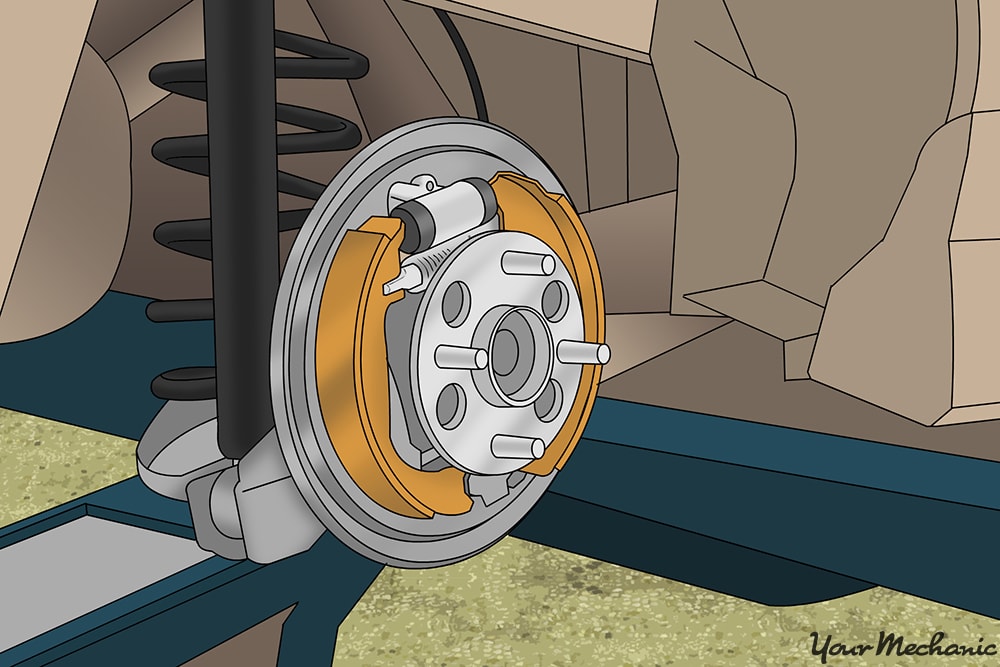

The parking brake assembly is a mechanical system that is mainly used to lock the rear wheels in position and keep the vehicle steady while not in use. Although it is frowned upon, the mechanical parking brake assembly can be used in an effort to slow the vehicle in the event of a failure of the hydraulic braking system. This is where the term “emergency brake” comes from.
Both in an emergency and other situations such as stunt driving, engaging the mechanical parking brake while the vehicle is in motion accelerates stress and wear on the system. The parking brake system must be serviced soon after either of these events.
Part 1 of 2: Understanding how the emergency parking brake system works
When you step on the brake pedal, hydraulic force is applied to the brakes on all four corners of the vehicle in an effort to cause the friction required to slow or stop the vehicle. All vehicles are equipped with a parking brake system though there are many different designs.
When you engage the parking brake, a cable or motor applies mechanical force against the rear brakes in order hold the wheels tight. This method also applies friction to a brake assembly in motion, but this action accelerates wear on the system and can cause a failure if abused.
One of the most obvious signs of a parking brake system that requires service is if the vehicle moves when you engage the parking brake mechanism. The vehicle should stand solid in place.
- Note: The available mechanical force is inferior to the force applied by the hydraulic braking system. This is the reason the parking brake is for parking. The mechanical parking brake system can be used to slow the vehicle in the event of an emergency where the hydraulic braking system has failed. This action accelerates wear on the system and must be serviced after such an event.
Part 2 of 2: Checking and replacing your parking brake shoe
Materials Needed
- Average mechanics tool set
- Brake service retractor set
- Brake service tool set
- Drum brake service tool set
- Jack
- Lug wrench
- Gloves
- Jack stand
- Parking brake cable release tool
- Respirator mask
- Safety glasses
- Torque wrench
- Vehicle service manual
Tip: The vehicle service manual was written to include information specific to your year model. The publication has the information you need to determine the design and function of your vehicles many systems. You can even find hints about special tools required for the service.
Step 1: Check your parking brake. Start the engine and engage the parking brake.
Check your mirrors and with your foot firmly on the brake, put the vehicle in drive. Without applying any throttle whatsoever, gently ease off of the brake pedal. You may feel the vehicle shift weight, but for the most part the vehicle should not move forward at all. If the vehicle rolls as if there were no brake applied, your parking brake system requires service.
- Note: It may be a good idea to hire an experienced technician to further diagnose the specific reason why the parking brake system is not operating properly.
Step 2: Place a wheel chock. Position a wheel chock behind and in front of at least one of the vehicle's wheels.
Since we are working on the parking brake which is generally found on the rear of the vehicle, the front wheels are the best place for the chocks.
-
Note: The vehicle service manual provides the location of the mechanical parking brake mechanism and you should adjust your safety measures accordingly. If the mechanical brake is on the front of the vehicle, place the wheel chocks on the back wheels.
Step 3: Elevate the rear wheels. Pick a safe, solid point on the rear of the vehicle to elevate the rear wheels.
If you are using the flat-tire service jack from the trunk, work on one corner at a time as these tools are not designed support such weight.
Step 4: Remove the wheel and tire assembly. If you raised both of the rear wheels, service one corner at a time.
Step 5: Determine the type of system. Determine which type of parking brake assembly your vehicle is equipped with and continue accordingly.
If your vehicle has disc style brake assembly on the rear, the brake caliper, caliper bracket, and rotor may have to be removed to reveal the parking brake mechanism behind them. The service of this style of parking brake is similar to the service of a drum style rear brake assembly.
A vehicle equipped with a parking brake mechanism integrated into the rear brake caliper is serviced with the replacement of the rear brake pads. These assemblies are easily identified by a large spring on the back of the caliper with a brake hose and cable attached to the caliper.
Generally, a special tool is required to apply pressure to the caliper piston while rotating the piston back into the caliper when servicing a system where the parking brake is integrated into the rear brake caliper assembly. Otherwise, service of these integrated systems is similar to a non-integrated style rear brake assembly with the replacement of the rear brake pads.
Vehicles with an electronic parking brake have a powerful motor integrated into the rear brake caliper which applies mechanical force to the brake pads against the rotor. Some vehicles require an electronic device linked to the vehicle to retract the piston via the motor.
Many of these systems can be serviced by removing the motor and manually retracting the caliper piston. Service of the friction material on these systems is similar to the replacement of rear brake pads on a disc style rear brake assembly.
- Note: If your vehicle has drum style brakes on the rear, the brake shoes are the working component of the assembly and can be engaged hydraulically or mechanically. If you are hearing a grinding noise coming from the rear of your vehicle, your brake shoes are likely worn out and must be replaced along with the brake drums.
Step 6: Follow your manual. Follow the guidelines laid out in the service manual regarding the service of the system your vehicle is equipped with.
Remember to clean and lubricate moving parts apart from the friction material. Lubrication or grease will damage the friction material.
Step 7: Adjust and tighten the wheel and nuts. Make the necessary adjustments (if applicable), reinstall the wheel and tire assembly and spin the lug nuts on tight.
Step 8: Fasten lug nuts to proper torque. Lower the vehicle to where the rear tire just begins to make contact with the ground surface.
Use a torque wrench to fasten the lug nuts or lug bolts to the proper torque. This removes any stress from the fasteners and ensures an accurate torque measurement.
- Warning: Any deviation from the procedure laid out during wheel fastening may result in a loose wheel.
The vehicle parking brake system is now in top shape. When parking your vehicle, you can now rest assured that the vehicle will stay put! Whether you drive an automatic or manual transmission vehicle, get into the habit of engaging the parking brake when leaving the vehicle for extended periods of time. This will prevent the vehicle from rolling down a steep hill while you are away at work or shopping. Consider hiring one of YourMechanic’s mobile experts for a full inspection of your vehicle’s parking brake system.


